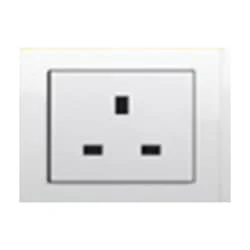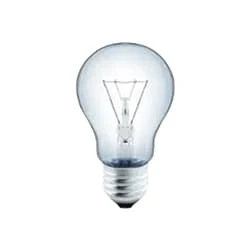Remote control Switch board connection | Remote control Switch
Remote control Switch board connection:
This diagram shows how to connect the Remote control Switch board connection. In this circuit, we just use a remote control board box, a DP MCB ( Doble Pole Miniature Circuit Breaker ), lights, a fan, etc. Please stay with the video for more clear details. If you want to follow our video. The link is in the below post.
Digram of Remote control Switch board connection wiring:
Components Need for this Project:
You can get the components from any of the sites below:
- DP MCB [See Buy Click Amazon]
- Switch [See Buy Click Amazon]
- 3-Pin Socket [See Buy Click Amazon]
- Light [See Buy Click Amazon]
- Fluorescent Light [See Buy Click Amazon]
- Ceiling Fan [See Buy Click Amazon]
*Please note: These are affiliate links. I may make a commission if you buy the components through these links. I would appreciate your support in this way!
$ads={1}Read Also:
Components used to make the Remote control Switch board connection:
01. DP MCB
 |
| Fig 2: DP MCB |
Double pole MCB can control two wires. This circuit breaker is generally used in single-phase electric lines. Double pole MCB circuit breaker input has two wires supply two wires and an output. In a single-phase line, A double-pole MCB circuit breaker is used to give good production. This circuit breaker is provided through phase and neutral circuit breaker, it is very safe. This circuit breaker is preferred for home appliances. A DP MCB usually trips for 2 reasons 1. Overload 2. Short circuit.
02. Switch
 |
| Fig 3: Switch |
A Single-Pole, Single-Throw (SPST) Switch. It's Got one Output and One Input. The Switch will Either be Closed or Completely Disconnected. SPSTs are Perfect for on-off Switching. They're also a Very Common Form of Momentary Switches. SPST Switches are Commonly Used in a Variety of Electrical Circuits and Applications, Such as Turning on And off Lights, Fans, and Other Appliances. They can Also be Used to Control the Flow of Electricity to Different Parts of a Circuit or to Switch Between Different Circuits Altogether.
03. 3-Pin Socket
 |
| Fig 4: 3-Pin Socket |
A socket is a type of equipment used in electrical wiring lines that always has an electrical connection. According to the need, it can be supplied to the electrical equipment. In case of electric iron, electric hand drill machine and electric hand grinder etc. two-pin socket with earth terminal is used. Also, three-pin sockets are used for electrical appliances that have a metal body and are likely to be electrified. Eg – Refrigerator, room heater, table heater, hot-plate, electric oven etc.
04. Light
 |
| Fig 5: Light |
CFLs work in a completely different way from ordinary lamps, they work by using a different process called fluorescence rather than generating light from heat. A typical light bulb wastes 90% of energy and converts only 10% of energy into light, this is where CFL has the biggest advantage. CFL- Curved or conical glass tube filled with argon and a small amount of mercury vapor. The inner wall of the glass is coated with fluorescent material. CFL- It is manufactured using the principle of creating fluorescent light. CFL- Originally white in color but now the construction and use of CFLs producing colored light has become popular.
05. Fluorescent Light
 |
| Fig 6: Fluorescent Light |
A fluorescent lamp, tube light, or rod light is a type of electric lamp that uses electricity to excite mercury vapor to produce light. These lamps are mainly used as an artificial source of light. When the mercury vapor inside a fluorescent lamp is excited with electricity, the mercury molecules emit short-wavelength ultraviolet light that hits fluorescent particles to produce visible light. Fluorescent lamps always require a ballast to control the flow of electrical energy inside the lamp, which is required by incandescent lamps. is not
06. Ceiling Fan
 |
| Fig 7: Ceiling Fan |
The main driving force behind all ceiling fan systems is the motor used inside the fan. We can also compare it with the soul of a fan. This motor converts the supplied electrical energy into mechanical energy which turns the ceiling fan and gives us air. When current is supplied, the magnetic field formed on the positive half-cycle becomes the reverse magnetic field on the next negative half-cycle. The magnitude part does not rotate and the capacitor is converted to a phase when it is connected to a phase motor or ceiling fan with a helical coil or stationing coil. When power is supplied there is a magnetic difference between the phase currents and the coils (acting as two phases) so that the motor or fan rotates.
Thank You for visiting the website. Keep visiting for more Updates.
$ads={2}
Frequently Asked Questions
What are the methods of remote control?
Remote control systems consist of the input, computer for transfer into an electrical signal, transmission, receiver, and computer for translating signals. Remote control can be done by sending signals through infrared light (like a TV remote), visible light, radio waves, wires, fiber optics, or sound waves.
How does a remote control system work?
TV remote controls the work in a similar way but using a type of light called infrared (and IR for short). The remote control has an LED light in it that flashes really quickly to emit a message which is then picked up by the TV. The remote control is called the transmitter, and the TV is called the receiver.
What are the parts of a remote control?
The basic components of an RF remote control are buttons for the user to input a command microcontroller unit (MCU) to process the user commands into digital messages, an RF transmitter (RF TX) to modulate and transmit the message, an antenna, and a battery to provide power supply to the remote control.
What type of device is a remote control?
In electronics, a remote control (also known as a remote or clicker) is an electronic device used to operate another device from a distance and usually wirelessly. In consumer electronics, a remote control could be used to operate devices such as a television set, DVD player, and other digital home media appliances.
How do you dry a remote control?
Allow the remote control to dry completely in a shady location with of good ventilation. Do not blow dry with a hair dryer as there is a risk of deformation and degraded waterproof performance. Wipe away any drops of water and dust with a soft dry cloth.








Post a Comment
Do leave your comments